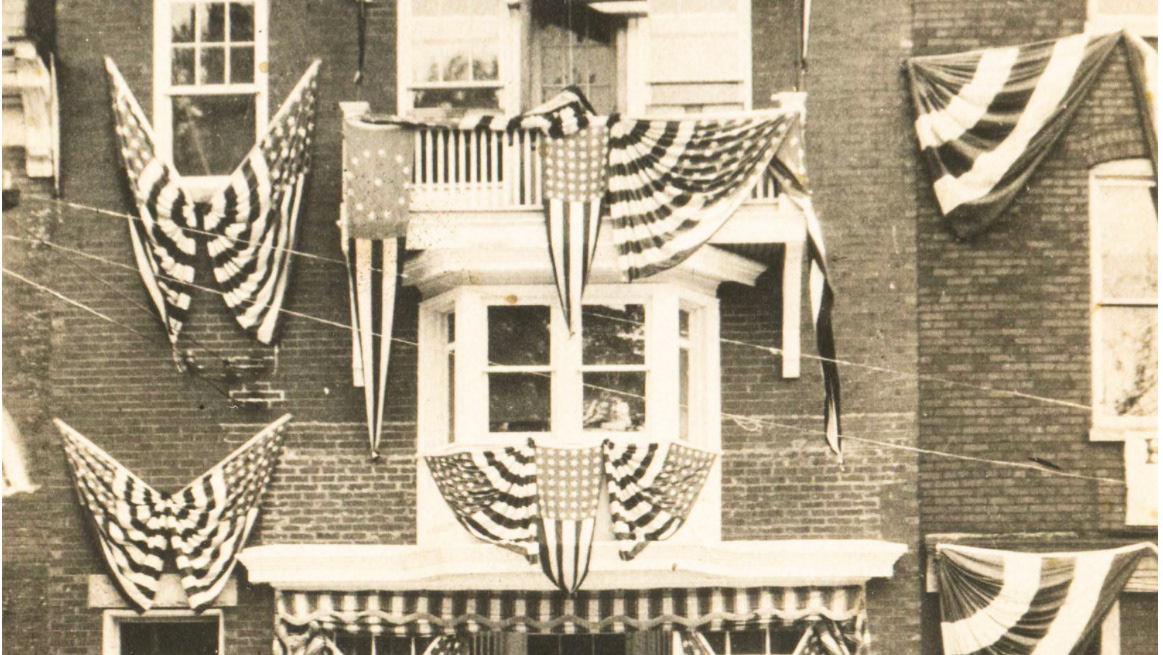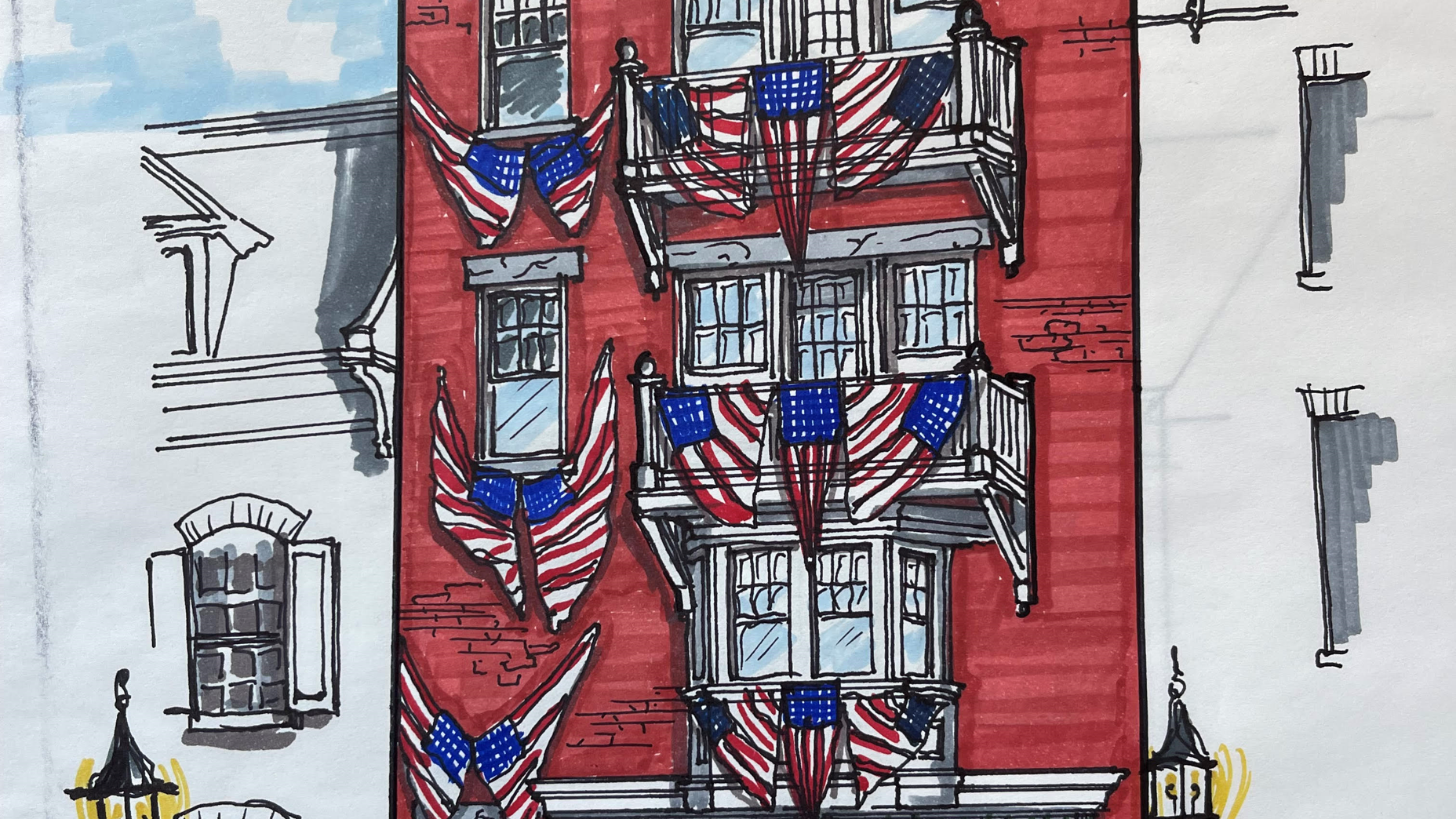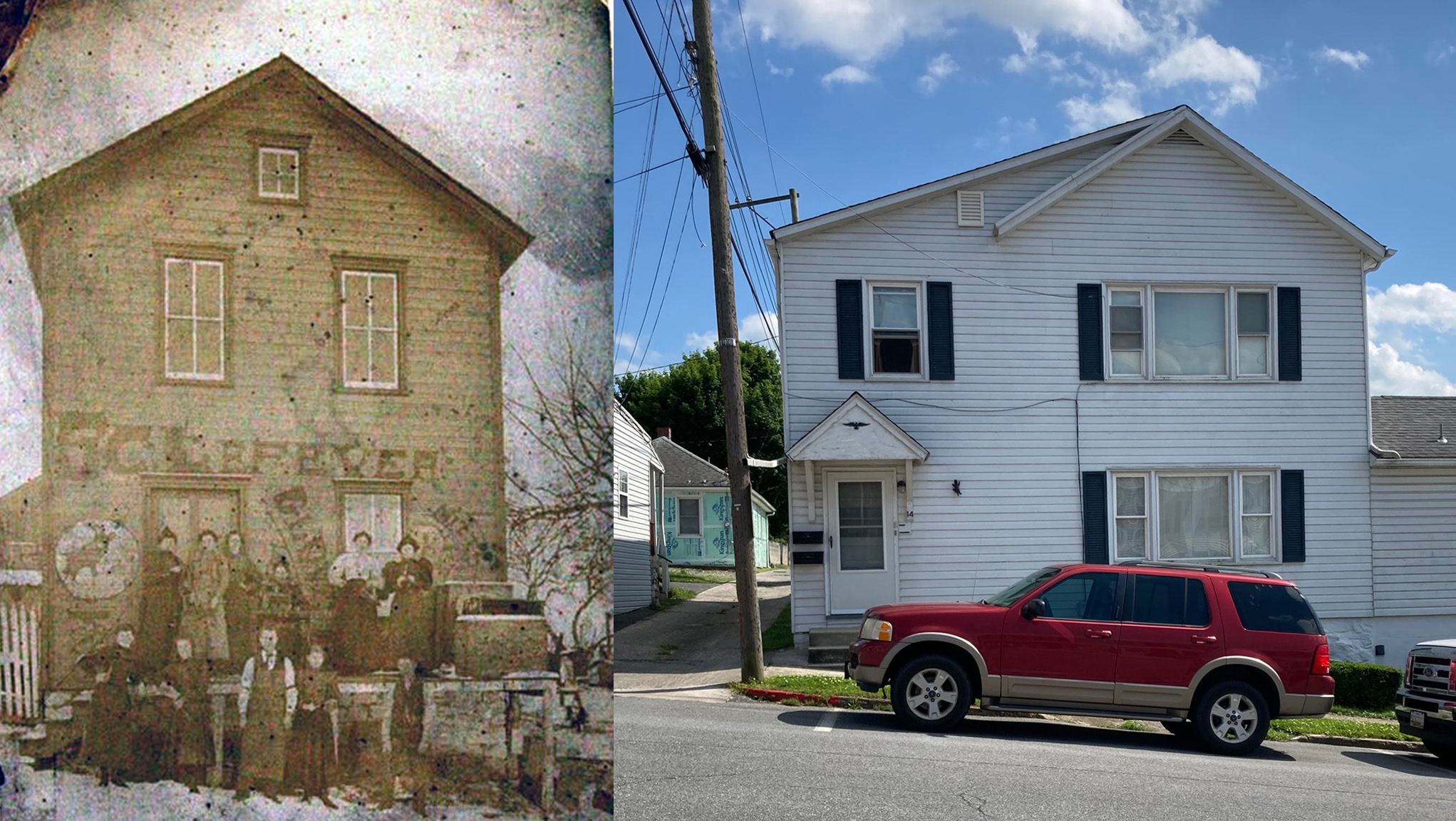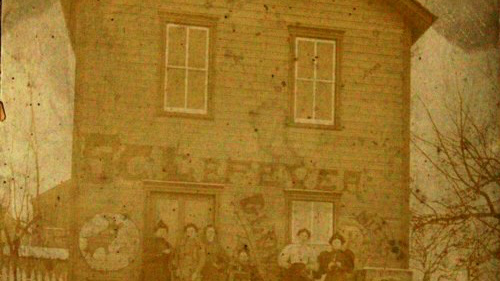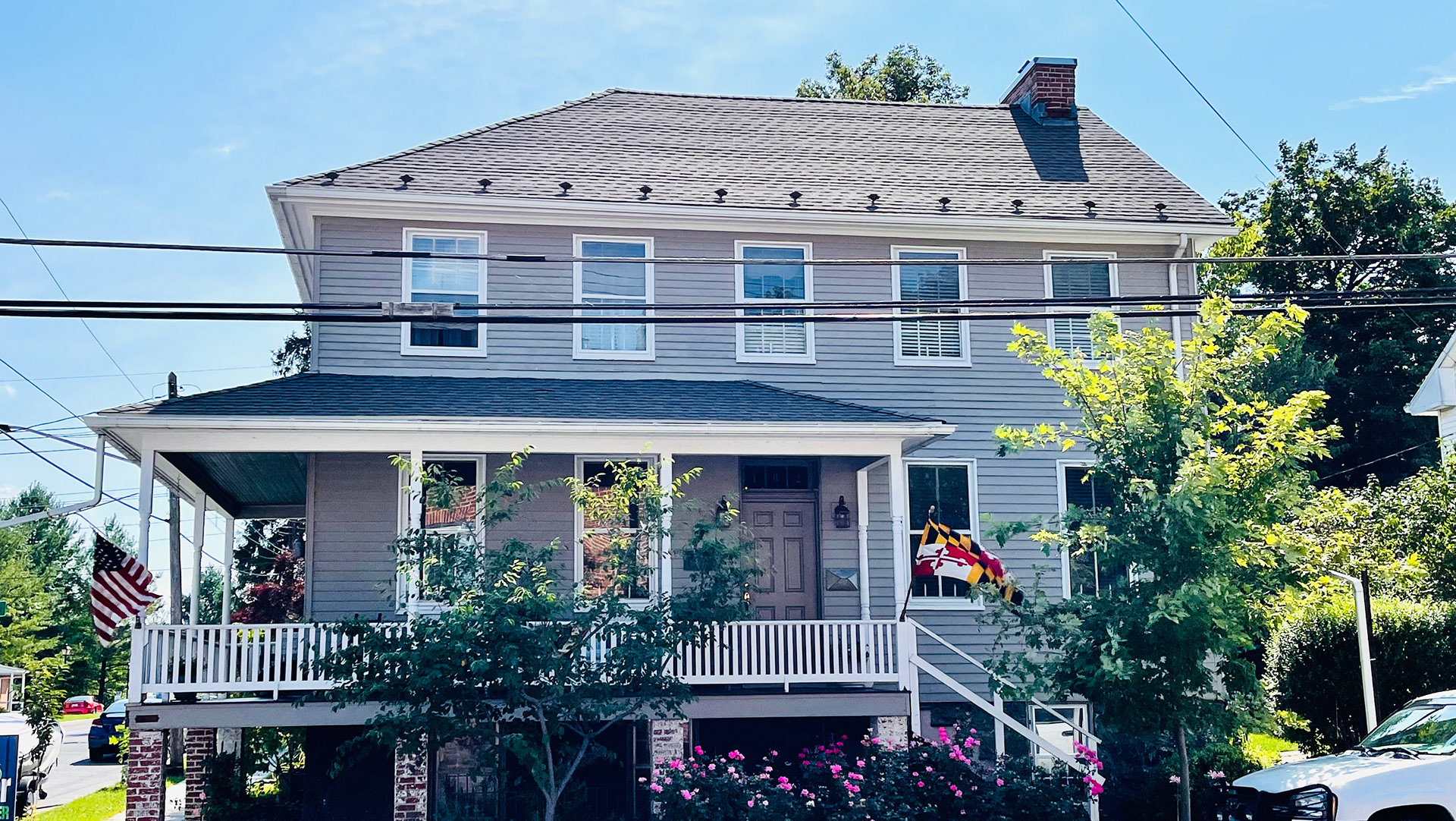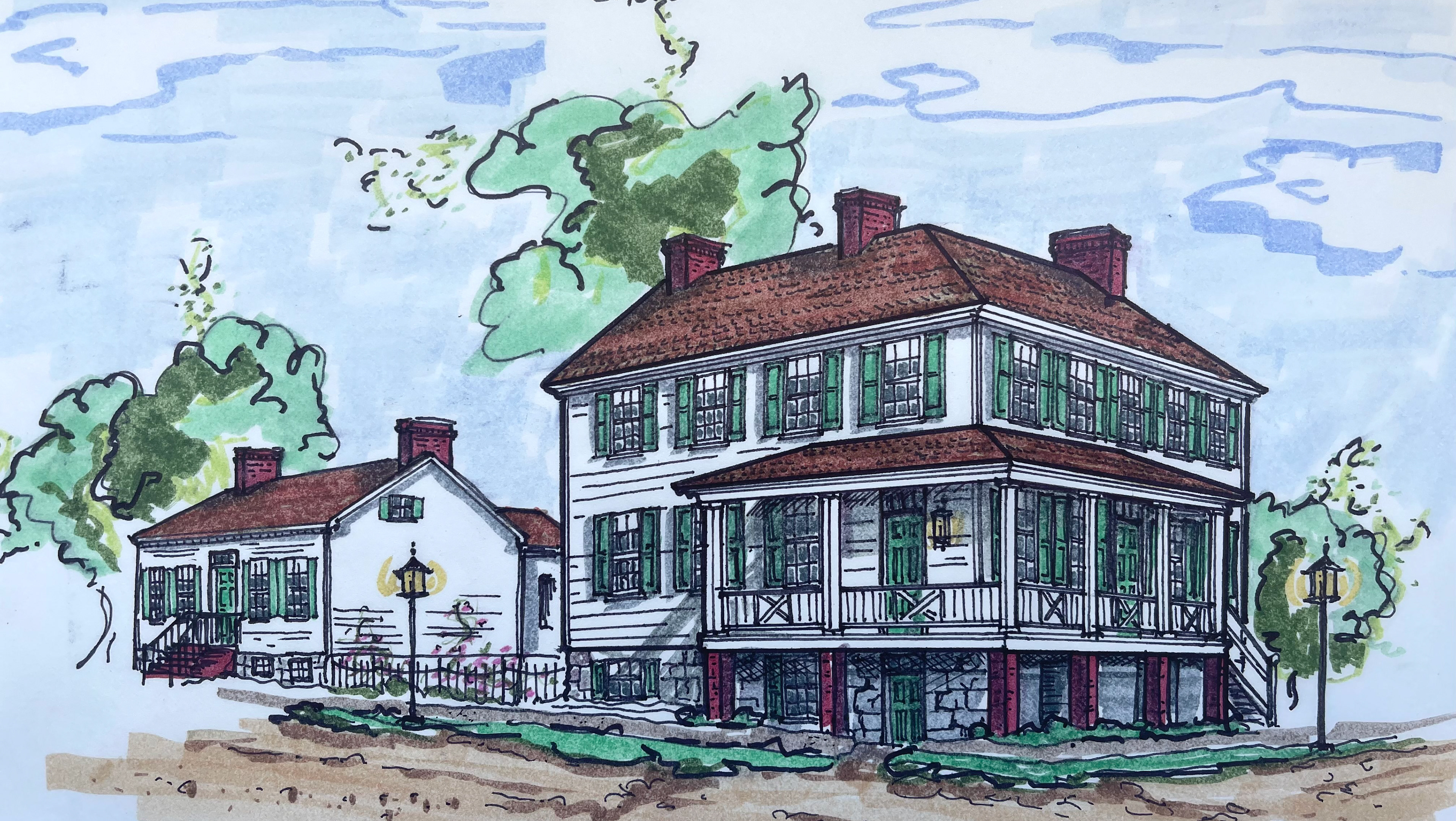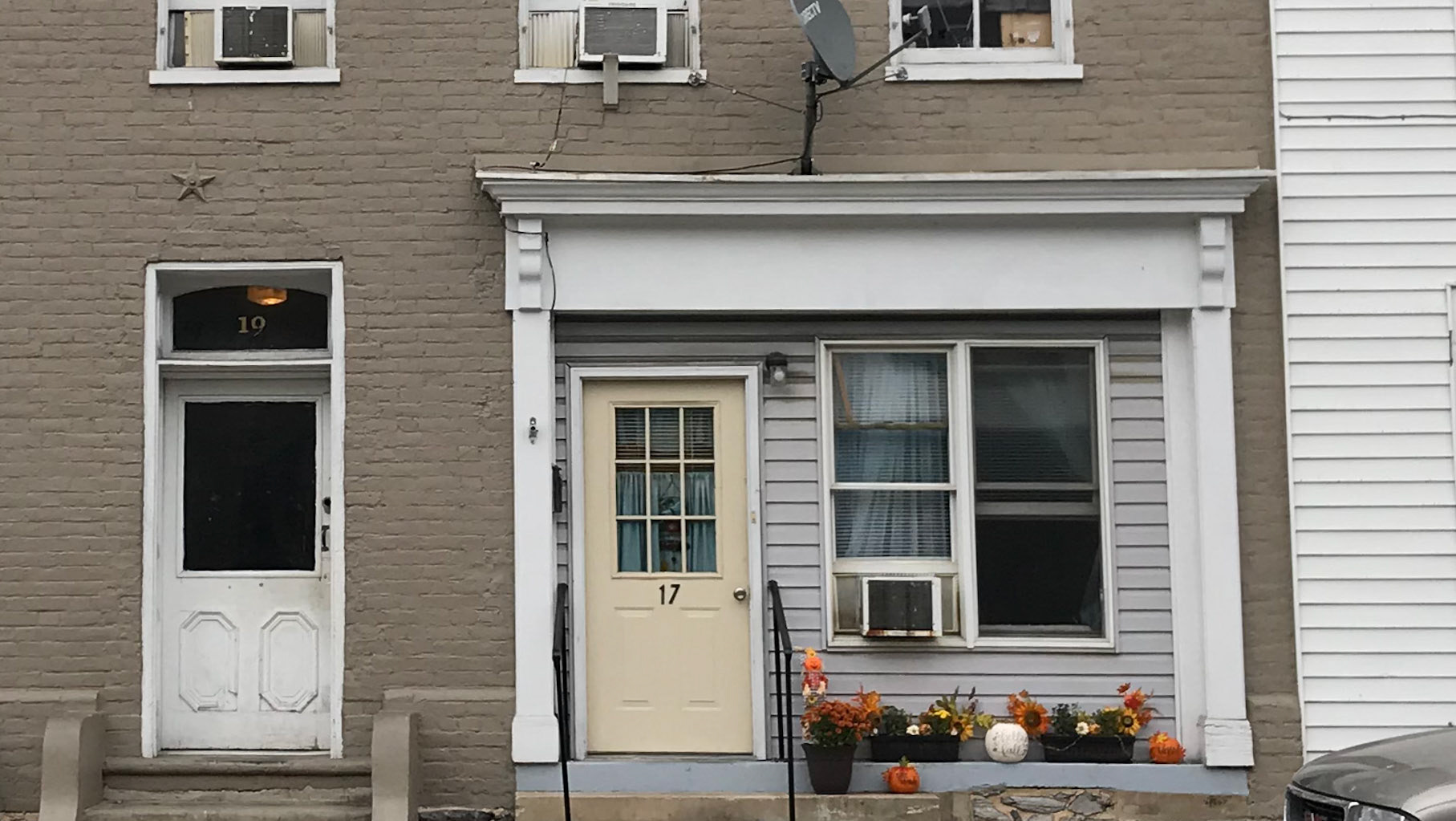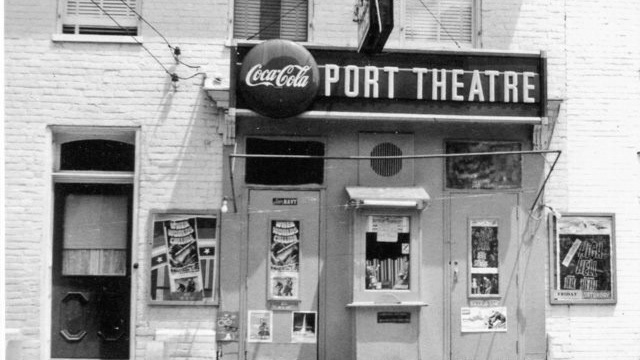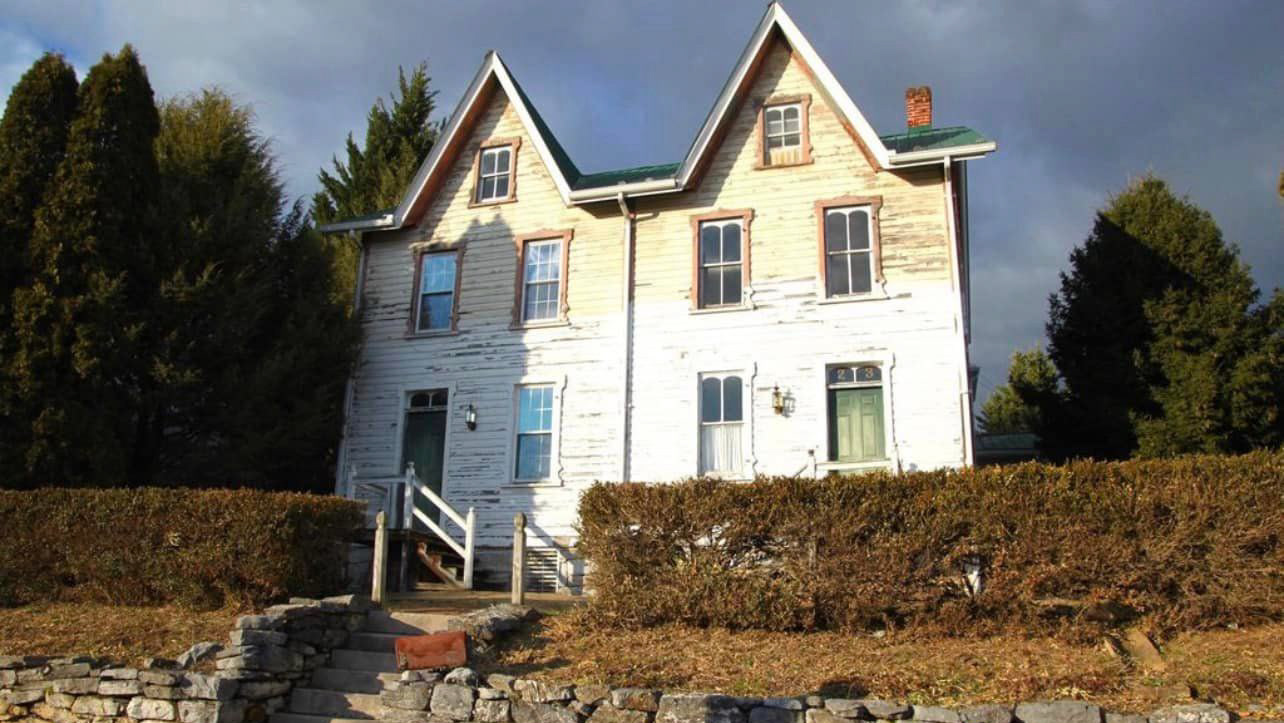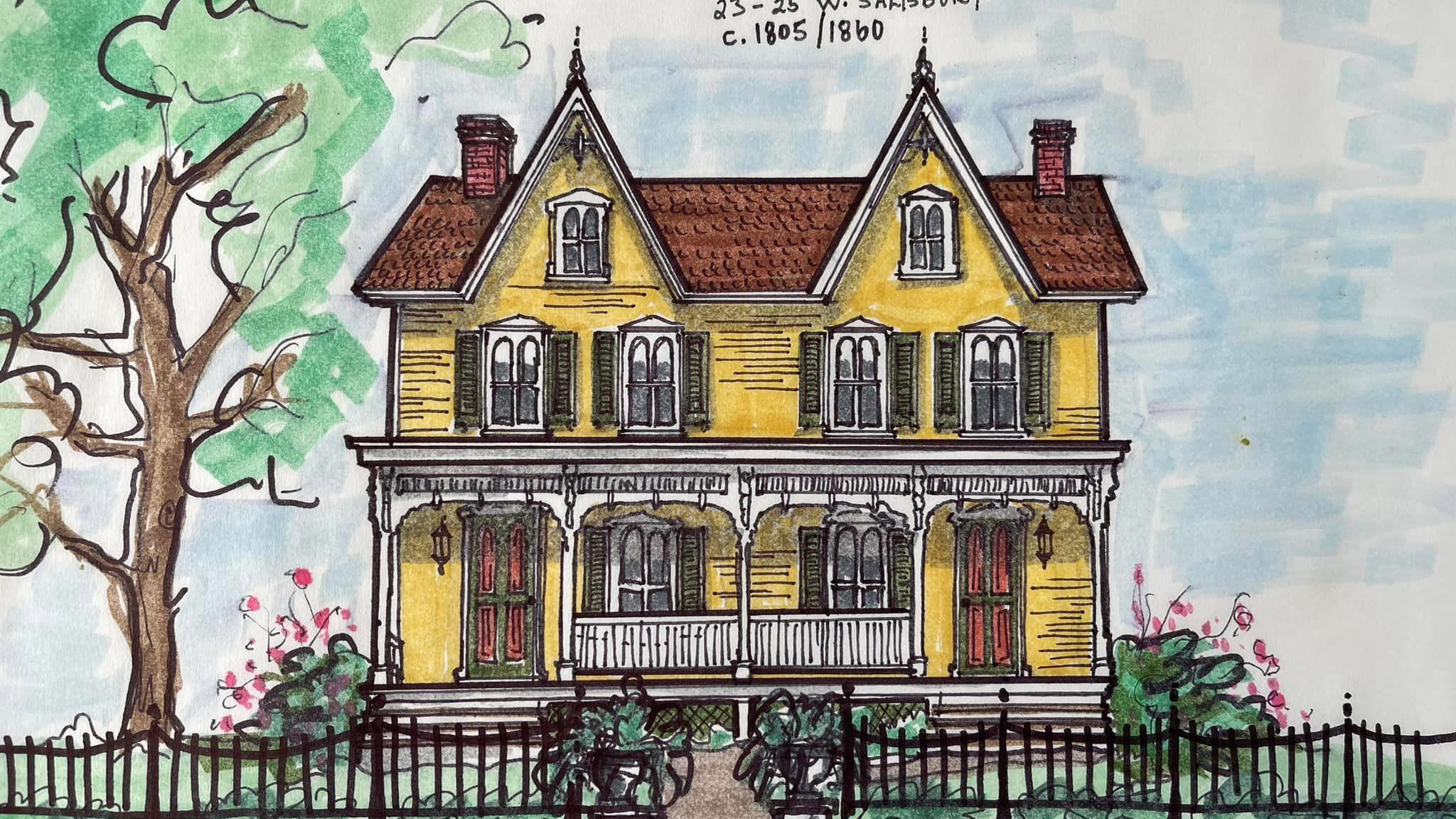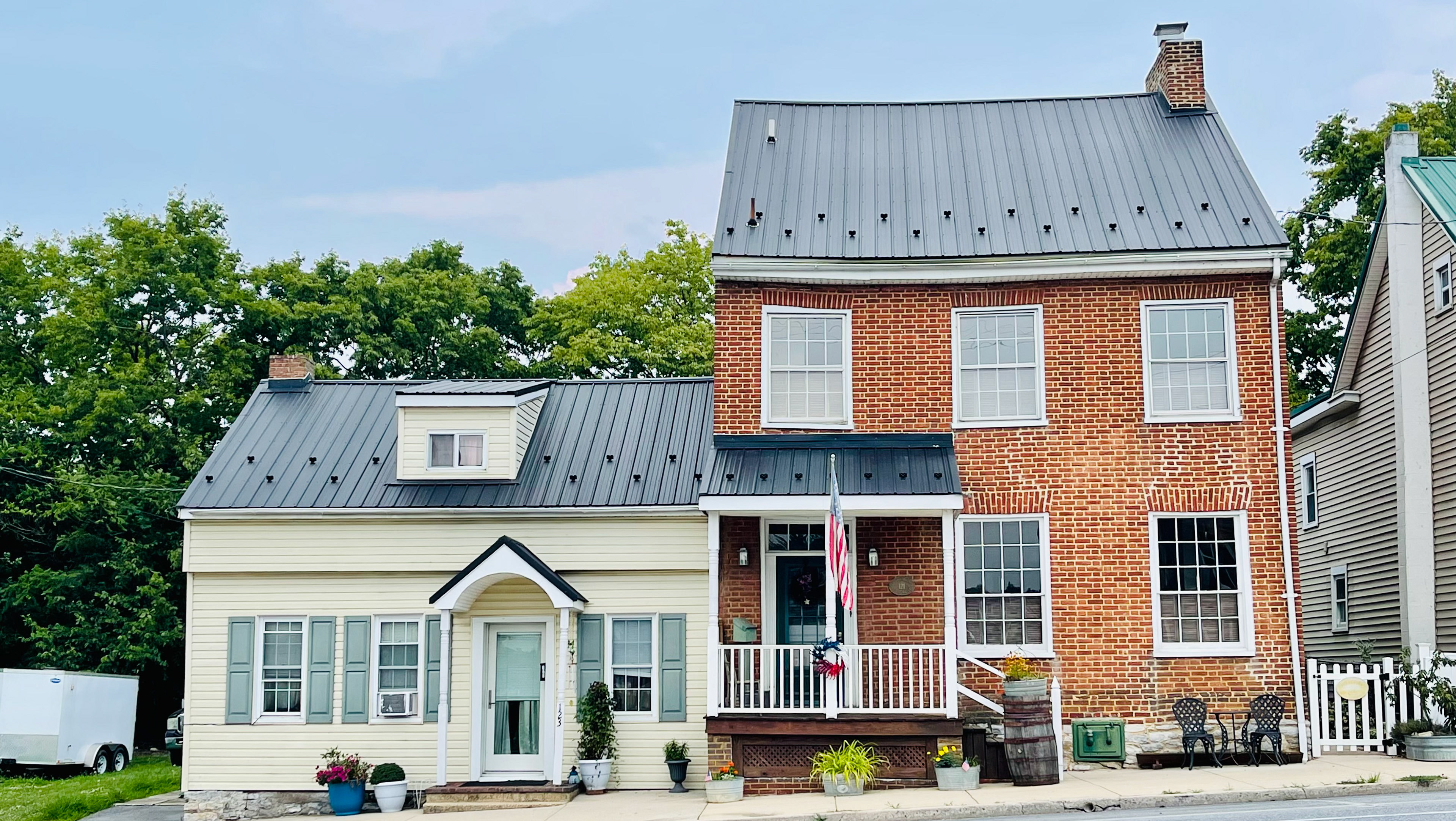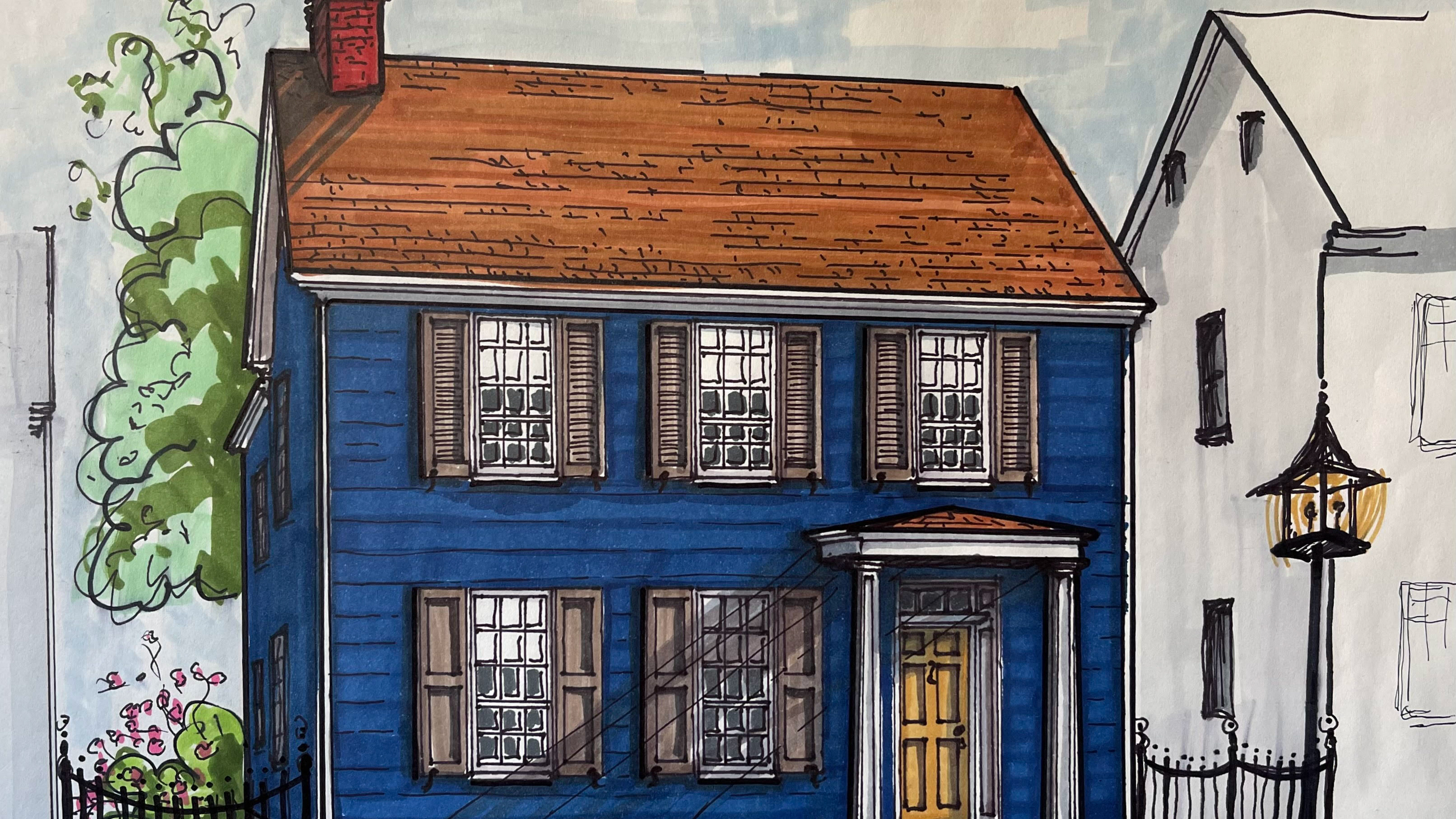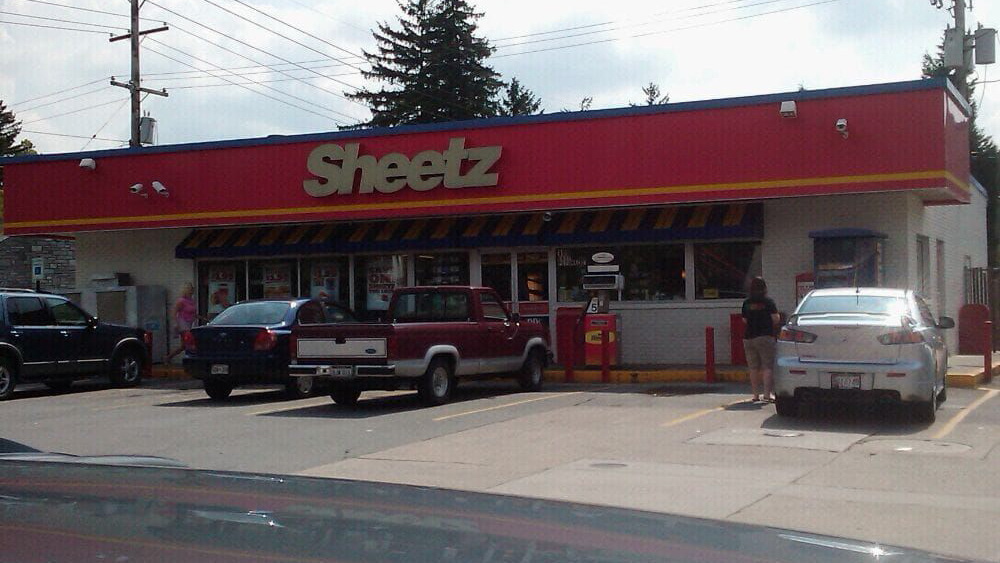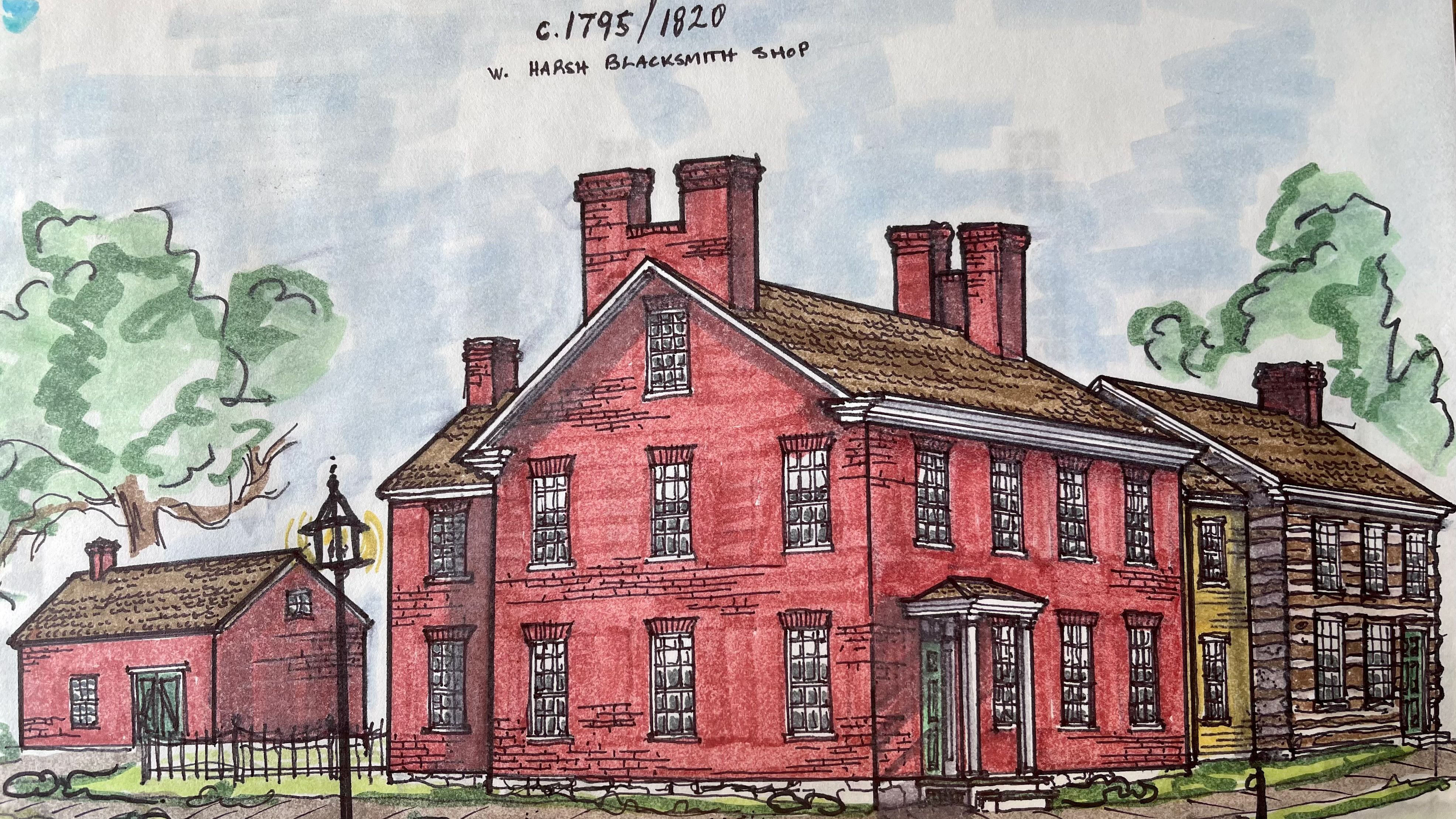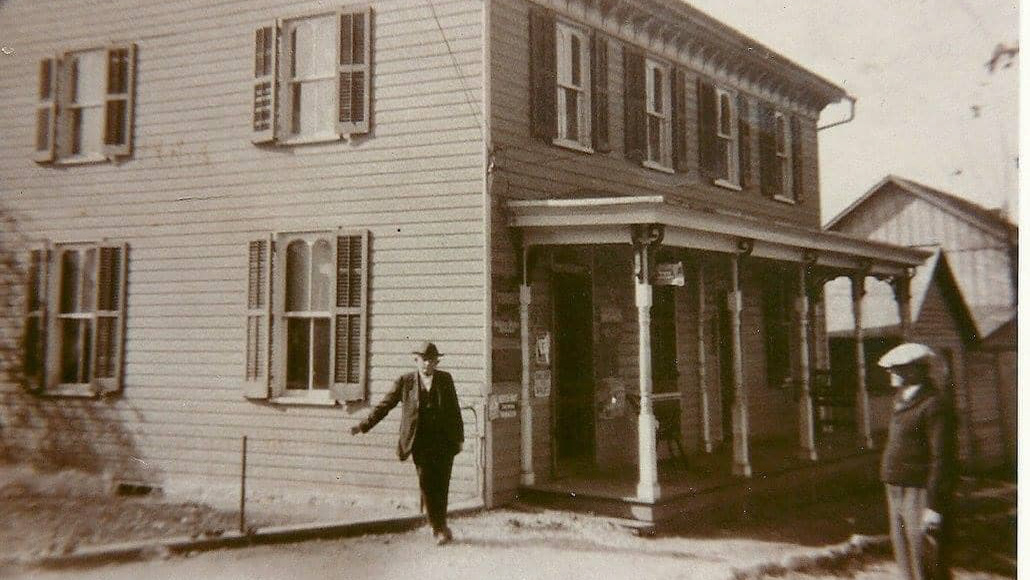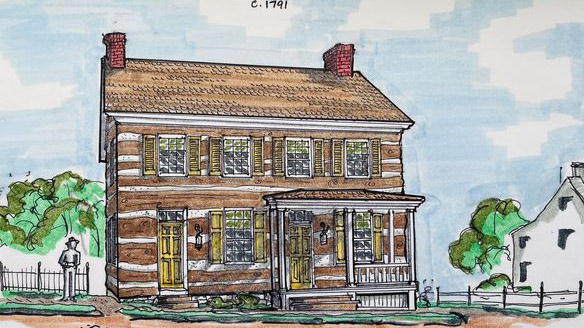A handsome two-story stucco-covered log house once sat at 15 W Salisbury Street here in Williamsport. The Federal-style home stood two stories high, five bays wide, and was among the larger homes on West Salisbury Street. The eaves were accented with a broad, stepped cornice and two large chimneys inside the main block's end walls.
A smaller 1-1/2 story log home sat just east of it, built in the Germanic vernacular style many homes of this region employ.
Nathaniel Rochester first leased lot 51 from Otho Holland Williams in April of 1788 for £5, along with the normal lease terms of having to build a house within three years, provide bushels of wheat, and so on. Rochester ran a dry goods store on West Potomac Street in the former residence of the Van Lear family. Which house that is is unclear at this time. The business was dissolved by 1792. Nathaniel eventually would leave the Hagerstown/Williamsport area and travel north where he would establish Rochester, NY. The city of Rochester would grow to be the third largest city in the state and hold the headquarters of such companies as Kodak, Xerox, and Bausch & Lomb. Mr. Rochester never built anything on lot 51 as evidenced by the fact that in 1814 lot 51 leases from Edward G. Williams to Mr. Daniel Weisel with the same terms as previously stated showing no improvement was present.
Daniel Weisel was born in 1765 in Bucks County, PA. Daniel and his older brother Jacob, a Revolutionary War Veteran, left Pennsylvania for opportunity in Williamsport in 1786. He married Margaret Startzman about 1790 in Williamsport and their first of 9 children was born in 1791. All 9 of their children were born here. Daniel was a merchant and owned a portion of a coach line with Albert Humrichouse that carried mail, and other commodities. The coaches ran from Boonsboro, MD to Winchester, VA, and finally to the Ohio River and back. Daniel was a respected businessman in town and in 1805 the Maryland General Assembly approved the town fathers to establish a lottery to help build the new market house. This market building was among the finest market houses ever built in Maryland and would later become the pantaloon factory and furniture store. It was demolished to make way for the Sheetz.
Daniel Weisel was part of this commission with other notable citizens such as Jacob T. Towson and John Hogg, both homes of these men have been destroyed as well and are featured in previous submissions. Daniel and Margaret built the stylish stucco-covered house and a smaller log home next door for their family in 1814-15. Margaret passed in 1817 when their youngest was just 4, Daniel died in 1825. The children of Daniel and Margaret would go on to be extremely important people in the history of Washington County. Daniel Jr. became a judge and married the niece of Otho Holland Williams, Ms. Matilda Davis. He established the Whig newspaper called the Republican Banner and lived into his 80s. Samuel Weisel was a renowned surgeon and was part owner of the Banking Mansion which he helped buy for his youngest sister Susanna and her husband Adam Shoop, a local lumber merchant. Samuel’s son Daniel Weisel the 3rd became a famous surgeon as well. Daniel the 3rd joined the Army as a surgeon and moved to the western frontier serving at Fort Davis, Texas, and then later Oklahoma.
One of the children, probably young Susanna and her husband Adam Shoop lived in the home until about 1841 when they moved into the Banking-Mansion. The estate sold the home to William Boultt for $500, a large sum, who in turn sells the property to Jerimiah Pattinson/Patterson a week later for $1000, a huge sum. This amount of money proves both houses were indeed there by 1841.
Jeramiah Patterson was a landholder here in town and a merchant and transporter of goods. His wife was Susannah. It is unclear if they lived in this house or not as they owned several other properties around town.
The Patterson Family sold the house on the west portion of the lot to Gesina “Lucinda” Esman in 1858 for $642.25. Lucinda Eveimeier and Henry Esman were both born in Germany in about 1818 and immigrated to the United States about 1840 to the Petersburg, VA area. The family moved north to Williamsport around 1850 where they raised their young children, Martha and Lucinda. Henry was a grocer. Just after buying the house, Henry passed away leaving Gesina “Lucinda” a widow with teenage daughters. In the 1860 census, Lucinda is mentioned to be a confectioner. Her real estate value is at $1000, and her personal property is $200, considerably higher than her neighbors. She ran a candy and bakery shop out of part of the house's first floor. Lucinda no doubt used skills she learned in the old world, bringing treats and candy to the population of Williamsport. Gesina lived out her retirement years in the house with her daughter, also called Lucinda, and her husband Joseph Taylor. Joseph was a boatman on the canal. Joseph must have died young as he does not show up in later census records. Gesina “Lucinda” Esman passed away in 1889 after a long life full of adventure. Young Lucinda continued at the family homestead until 1906 when she sold it.
Other notable owners include Joseph and Susan Wissinger who bought the old house in 1920. They also reunited the split lot as they purchased the other old log house built by the Wiesel’s over 100 years earlier on the east portion of lot 51 in 1930. The Wissingers were farmers that retired to Williamsport. Joseph was also a salesman, and he and Susan ran a grocery together, presumably on the lower level of the house. The Wissinger’s passed in 1935 and 1939 respectively.
The lovely old houses passed hands a few times until 1987, the very year Williamsport held its bicentennial. Sadly that year, a demolition permit was issued, and the two houses were smashed into rubble to make way for an expanded parking lot. These houses held some incredible history to not only our town but our county, state, and nation. Research and consideration should be conducted before demolition permits are granted that involve historic structures. The extensive 1980 survey of historic buildings in town had the number of contributing structures at just over 400. An investigation has led us to learn that since then more than 50 have been lost. That’s nearly 15% of all structures in town. It's time for Williamsport to invest in its future and save its past.

